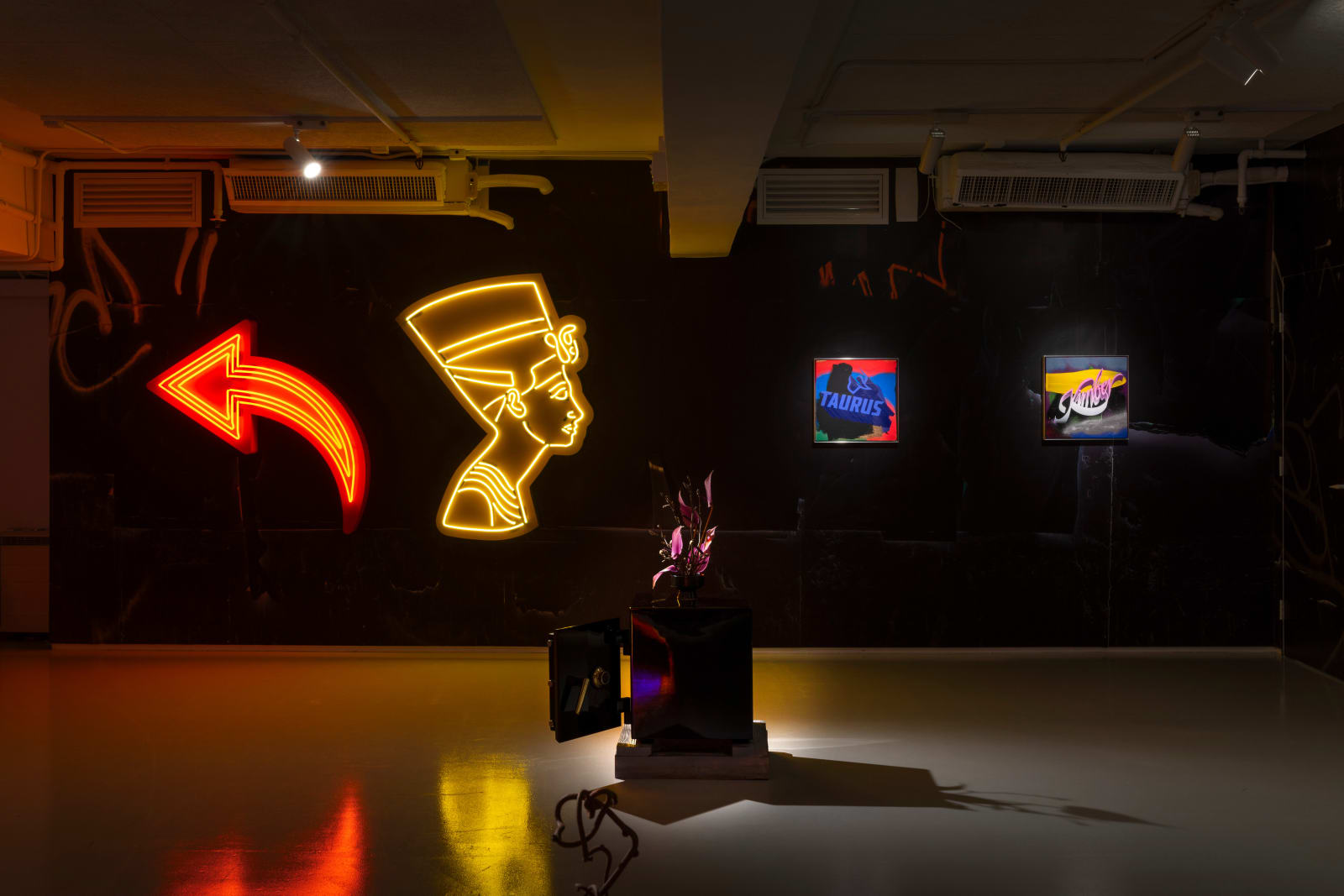

Awol Erizku Ethiopian-American, b. 1988
A Throne In Absence, 2024
Neon light on aluminium
152.4 x 241.6 cm. (60 x 95 1/8 in.)
Edition of 3 + 2 AP
Copyright The Artist
Awol Erizku’s series of neon sculptures – NO JAZZ (CIGARETTES), A Throne in Absence, and The New World is Yours (And Everything in It) – redefines the visual language of...
Awol Erizku’s series of neon sculptures – NO JAZZ (CIGARETTES), A Throne in Absence, and The New World is Yours (And Everything in It) – redefines the visual language of neon, an art form intrinsically linked to commerce, consumerism, and the glamour of urban nightscapes. Traditionally emblematic of high capitalism, prosperity, and even hedonistic indulgence, neon signage is here transformed by Erizku into a medium for profound socio-political inquiry. Each piece captures the allure of neon’s vibrant glow while redirecting its associations towards themes of agency, cultural displacement, and hidden histories.
In The New World is Yours (And Everything in It), a hand flipping a coin emerges as a powerful metaphor for chance and choice, symbolising both the allure and volatility of “freedom.” The title alludes to Nas’s iconic lyrics from his debut album, evoking themes of ambition, fate, and self-determination within a world of complex socio-economic constraints. The gesture, laden with connotations of fate, agency, and risk, invites the viewer to contemplate the precariousness of decision-making in contemporary life, particularly within the socio-political and economic contexts shaping the Black experience.
Meanwhile, A Throne in Absence presents Nefertiti’s iconic bust, alongside a red arrow that points away from her form, a subtle yet poignant comment on her historical displacement and the legacy of colonial extraction. This work gestures towards the complex narrative of cultural ownership and historical erasure, challenging viewers to consider the absence that has been left in place of her origins.
Erizku’s choice of neon subverts its common function as a commercial lure, transforming it instead into a medium for political discourse. By adopting a form typically reserved for playful or indulgent advertising, he repositions neon as a serious, contemplative device. Here, the signs point not towards ephemeral pleasures but towards the pressing, often overlooked issues of cultural identity, sovereignty, and the lived realities of diasporic communities. In Erizku’s hands, neon becomes both a beacon and a warning, its striking glow reframed as a call to engage with themes that resonate deeply within the modern socio-political landscape.
In The New World is Yours (And Everything in It), a hand flipping a coin emerges as a powerful metaphor for chance and choice, symbolising both the allure and volatility of “freedom.” The title alludes to Nas’s iconic lyrics from his debut album, evoking themes of ambition, fate, and self-determination within a world of complex socio-economic constraints. The gesture, laden with connotations of fate, agency, and risk, invites the viewer to contemplate the precariousness of decision-making in contemporary life, particularly within the socio-political and economic contexts shaping the Black experience.
Meanwhile, A Throne in Absence presents Nefertiti’s iconic bust, alongside a red arrow that points away from her form, a subtle yet poignant comment on her historical displacement and the legacy of colonial extraction. This work gestures towards the complex narrative of cultural ownership and historical erasure, challenging viewers to consider the absence that has been left in place of her origins.
Erizku’s choice of neon subverts its common function as a commercial lure, transforming it instead into a medium for political discourse. By adopting a form typically reserved for playful or indulgent advertising, he repositions neon as a serious, contemplative device. Here, the signs point not towards ephemeral pleasures but towards the pressing, often overlooked issues of cultural identity, sovereignty, and the lived realities of diasporic communities. In Erizku’s hands, neon becomes both a beacon and a warning, its striking glow reframed as a call to engage with themes that resonate deeply within the modern socio-political landscape.

